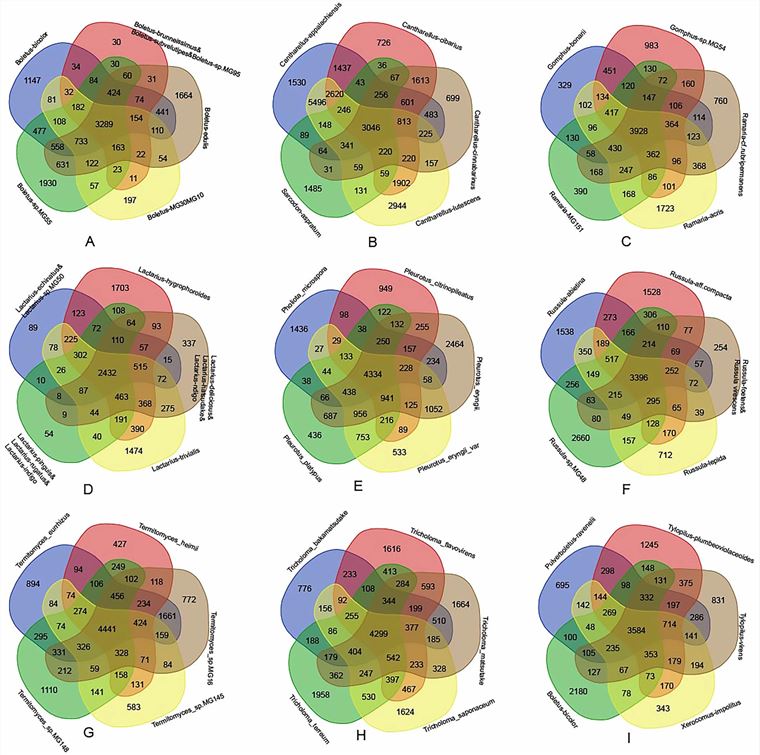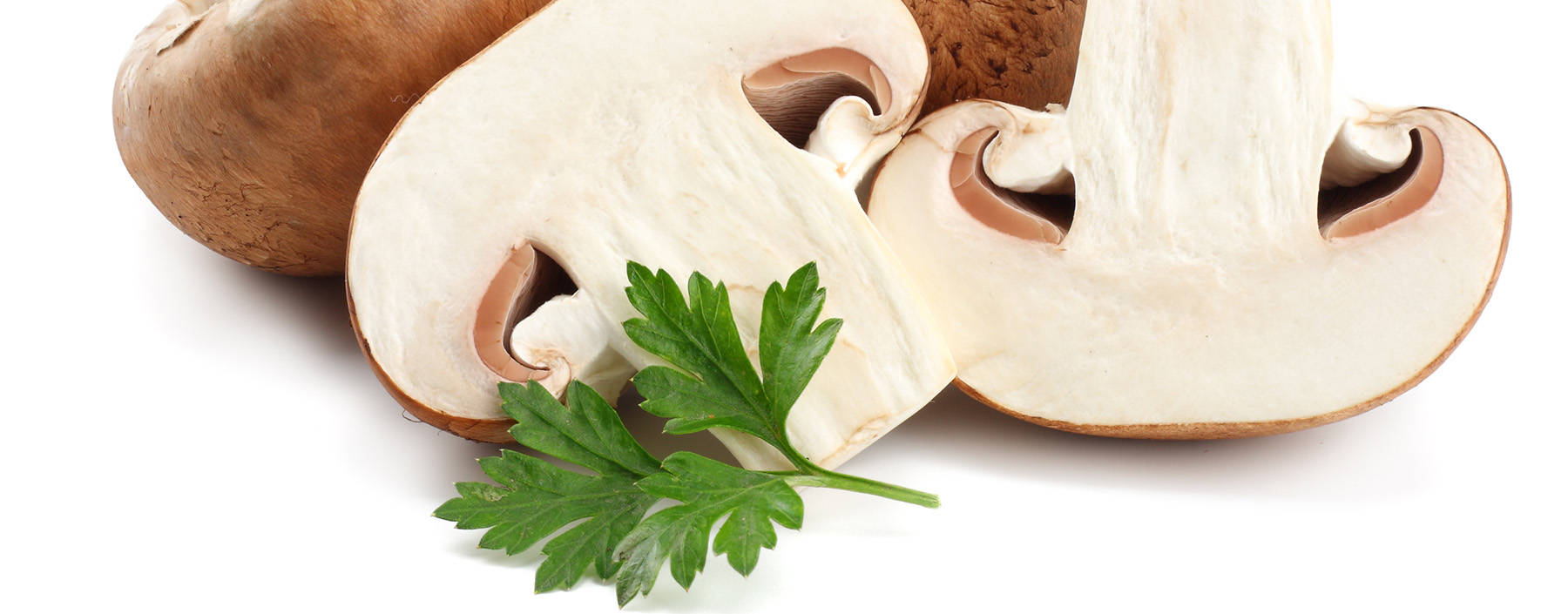Based on a cutting-edge high-throughput sequencing technology platform, Lifeasible provides mushroom structural genomics services based on whole-genome sequencing to sequence DNA genomes, estimate genome size, and perform genome assembly and duplicate annotation.
Introduction to Structural Genomics
The world's innumerable and diverse mushrooms are a valuable resource for discovering nutrients and new drug candidates. Genome sequencing has evolved through three generations of sequencing technologies and has been widely used in mushroom research because of its simplicity and accuracy. The abundance of genomic data makes it easier to identify and analyze the biosynthesis of bioactive metabolites in mushrooms, providing opportunities to conduct research and develop their metabolites. Many mushroom genomic projects are underway, and genome sequencing in the model mushroom S. commune provides greater insight into the underlying mechanisms of mushroom formation.
 Fig. 1. Venn diagram showing unique and shared gene families. (Li H, et al., 2018)
Fig. 1. Venn diagram showing unique and shared gene families. (Li H, et al., 2018)
Services
Lifeasible offers second-generation and third-generation sequencing technologies for whole-genome sequencing of the genomes of various edible or medicinal mushrooms, including A. bisporus, V. volvacea, Schizophyllum commune, F. velutipes, G. lucidum, C. militaris, Lignosus rhinocerotis, and Ganoderma sinense, etc.
Using these sequencing technologies, we can help you obtain basic information about mushroom genomes, including genome size, structure, and function. In addition, we can perform additional annotation of these genomes to obtain a large amount of functional genetic information, which can provide useful information to support phylogenetic analysis and gene function analysis of mushrooms. Our featured services include the following:
- Mushroom genomics services for exploring biosynthetic gene clusters (BGCs)
Many putative BGCs are not visible in the mushroom genome. We provide advanced genome mining platforms (including multiple sequence alignment, phylogenetic studies, bioinformatics tools, etc.) to analyze BGCs in mushrooms for naturally occurring bioactive compounds produced from multi-enzyme pathways. This approach helps to increase the yield of these compounds in mushrooms.
- Mushroom genomics services for the analysis of biosynthetic pathways
We can perform small RNA analysis to identify miRNAs, study miRNA-dependent regulation of valuable metabolites, and study miRNA targeting genes associated with biosynthetic pathways to help customers design metabolic engineering strategies to increase bioactive substance content in mushrooms.
Mushroom Genome Sequencing Process
- Genomic DNA sequencing.
- Genome size estimation.
- Genome assembly and repeat annotation.
- Functional gene annotation.
- Non-coding RNA annotation.
- Construction of phylogenetic trees.
Our mushroom genome analysis enables the identification of relevant genes that affect the quality, nutrient content, and bioefficiency of mushrooms. By sequencing more different strains, DNA barcoding can be used to quickly and consistently screen for superior or specific strains. The rich mushroom genome will be an essential genomic resource for the study of sexual reproductive systems, genetic diversity, and selection for domestic traits. If you are interested in our services, please contact us.
Reference
- Li H, Wu S, Ma X, et al. (2018) The genome sequences of 90 mushrooms[J]. Scientific reports. 8(1): 9982.
For research or industrial raw materials, not for personal medical use!


 Fig. 1. Venn diagram showing unique and shared gene families. (Li H, et al., 2018)
Fig. 1. Venn diagram showing unique and shared gene families. (Li H, et al., 2018)